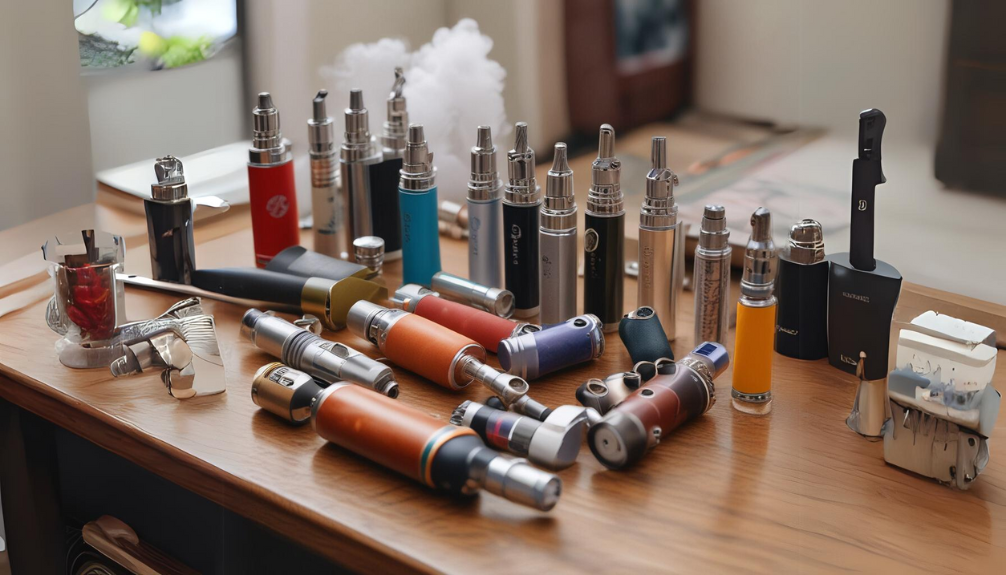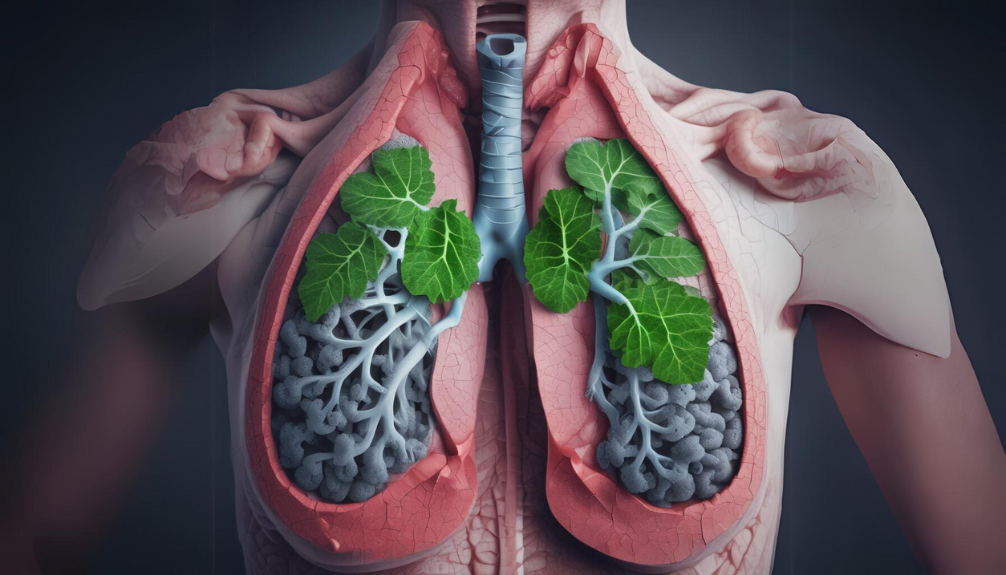Navigating Vaping Regulations: A Comprehensive Guide
Puff VapesShare

Navigating vaping regulations involves adapting to changing laws and ensuring consumer safety. Federal laws focus on product guidelines and health warnings and risks. Province regulations vary but often restrict youth access and advertising. Age restrictions and product labeling are crucial to follow. Monitoring tobacco and vaping products is essential for compliance. Health Canada oversees safety and educates the public on risks. The Vaping Products Act enforces strict rules on manufacturing and other vaping industry associations and products promotion regulations. Evaluate products for transparency and safety. This overview can help you understand the complex landscape of vaping regulations.
History of Vaping Regulations
In the past decade, vaping regulations have undergone significant changes due to increasing concerns about public health and safety. Health Canada has played a pivotal role in overseeing these transformations. The introduction of the Vaping Products Act and the Non-Smokers Health Act has reshaped how vaping products are regulated and promoted in the market. These regulations aim to address issues such as nicotine addiction and the potential for health hazards and risks associated with electronic cigarettes.
Under these regulations, most vaping devices and products are now subject to stricter guidelines to ensure the health professional safety of consumers, especially non-smokers. The promotion of vaping products is also closely monitored to prevent targeting youth or misleading advertising practices. Additionally, the regulations have placed limitations on the sale and distribution of tobacco products in vape shops, further emphasizing the government's commitment to reducing tobacco-related harm in society.
Federal Vaping Laws
Federal regulations on vaping products mandate strict guidelines to ensure consumer safety and regulate the promotion of these products. The focus is on tobacco control, health risks, and reporting regulations related to vaping devices. Health hazards and warnings are prominently displayed on vaping product advertising packaging to inform consumers about the risks associated with nicotine salts and the potential public health consequences. Vaping devices are also regulated as cessation devices such an authorization to help reduce smoking rates. Additionally, manufacturers regulate vaping products are required to submit sales reports and adhere to specific health hazard guidelines to protect consumers.
These federal laws aim to enhance public awareness and address the concerns surrounding tobacco control the increasing popularity of vaping among youth and the potential long-term health effects. By implementing stringent regulations, the government is working to strike a balance between allowing adult access to vaping products as smoking alternatives while safeguarding against the risks they pose. Staying informed about these federal vaping laws is crucial for both consumers and businesses to ensure compliance and contribute to a safer vaping environment.
Province-Specific Regulations
To navigate the complex landscape of tobacco dependence and vaping regulations more effectively, familiarize yourself with the specific regulations set by individual Province. Each Province has its own set of rules regarding tobacco and vaping products. Some regulate product sales and advertising of e-cigarettes to curb youth vaping.
Provinces also implement vaping product reporting regulations to monitor health effects and usage trends. It's important to note that some Province have regulations excluding certain vaping liquids, other vaping products regulated, or ingredients that are allowed in others.
When dealing with vape shops, ensure you're aware of the province-specific laws to avoid any legal issues. Remember that while federal laws provide a baseline, province-specific regulations can be more stringent.
Stay informed about the current regulations in the provinceyou're operating in or intend to sell vaping products to ensure compliance with the law.
Age Restrictions
Ensure compliance with age restrictions when purchasing vaping products to avoid legal consequences. Age restrictions are in place to prevent minors from accessing vaping products, as they're considered a less harmful alternative to smoking cigarettes.
In many regions, the legal age to purchase vaping products is aligned with the age required to buy tobacco products, as per the Tobacco Act. The sale of e-cigarette products containing nicotine is regulated under the Drugs Act to ensure they aren't obtained by individuals below the legal age.
It's vital to be aware of these regulations to prevent underage individuals from e cigarettes, vaping substances or using vaping products. Health professionals advocate for age restrictions on tobacco use, e cigarettes and vaping products due to the potential harm they can pose to young individuals who are still developing.
Product Labeling Requirements

Adhere to clear and concise vaping product advertising and labeling requirements to convey essential information about vaping products accurately and effectively. When labeling your vaping products, it's crucial to include a detailed list of ingredients. This list should clearly specify if your vaping product contains propylene glycol, vegetable glycerin, or more than one substance. Providing this information is vital for consumers who may have allergies or specific preferences.
Additionally, if your product is marketed as a quitting smoking aid, ensure that this claim is clearly stated on the product sales' label.
To comply with regulations, consider including a supplemental ingredients report with your vaping products. This supplemental ingredients report can offer further insight into the composition of your vaping product contained in, giving consumers a more comprehensive understanding of what they're inhaling. By being transparent about your ingredients, you can help users make informed decisions and avoid potentially harmful alternatives.
Marketing and Advertising Guidelines
When promoting vaping products, make sure your marketing and advertising strategies align with regulatory guidelines to maintain compliance and transparency. To ensure you stay within the boundaries of the law and uphold ethical standards, here are some essential guidelines to keep in mind:
- Avoid Targeting Minors: Refrain from using marketing tactics that appeal to individuals under the legal vaping age. This includes using cartoon characters, flavors that may be attractive to children, or advertising in locations frequented by minors.
- Provide Accurate Information: Your advertising should always convey truthful and non-misleading information about your products. Avoid making unsubstantiated health claims or misrepresenting the benefits of vaping.
- Disclose Risks Clearly: Be transparent about the risks associated with vaping in your advertisements. Clearly communicate warnings about nicotine content, potential side effects, and the addictive nature of vaping products to ensure consumers are well-informed.
Public Vaping Bans
Public vaping bans are becoming increasingly common in various jurisdictions as authorities aim to regulate the use of vaping products in shared spaces. These bans typically prohibit vaping in places such as public parks, restaurants, bars, and workplaces. The rationale behind these restrictions is often to protect non-users from exposure to secondhand aerosol and to prevent normalization of vaping, especially among youth.
When faced with public vaping bans, it's essential to be aware of the specific regulations in your area. Look for signage indicating where vaping is prohibited and respect these rules to avoid potential fines or penalties. If you're unsure about whether vaping is allowed in a certain location, it's best to err on the side of caution and refrain from vaping until you can confirm the rules.
Remember that public vaping bans are put in place to promote public health and safety. By adhering to these regulations, you can help create a more respectful and considerate vaping community while also the public health groups contributing to a cleaner and healthier environment for everyone.
Navigating Vaping Regulations
Understanding the intricate web of vaping regulations can be a daunting task for both seasoned vapers and newcomers to the vaping scene. As regulations continue to evolve, staying informed is crucial to ensure compliance and safety. Here are some key points to keep in mind as you navigate vaping regulations:
- Age Restrictions: Different jurisdictions have varying age limits for purchasing and using vape products. Make sure you're aware of the legal age in your area to avoid any potential fines or penalties.
- Product Labeling: Regulations often dictate specific requirements for how vaping products should be labeled, including ingredients, nicotine content, and health warnings. Checking that your products meet these guidelines can help you avoid legal issues.
- Online Sales: Some regions have restrictions on online sales of vaping products. Be sure to understand the rules regarding online purchases and shipments to stay compliant with the law.
Regulation of Tobacco and Vaping Products
Navigating the regulations surrounding vaping often involves understanding how tobacco and vaping products are regulated to ensure compliance and safety in this evolving landscape. Both tobacco and vaping products are subject to various regulations aimed at protecting public health and economic costs.
Tobacco products have a long history of regulation due to their known health risks. Laws governing tobacco typically include age restrictions, packaging requirements, and advertising limitations. These regulations aim to reduce smoking rates and prevent access to tobacco products by minors.
Vaping products, on the other hand, are relatively newer to the market and have faced rapid changes in regulatory oversight. The regulations for vaping products regulated often focus on ingredients disclosure, manufacturing standards, and labeling requirements. Additionally, some jurisdictions have implemented flavor bans and restrictions on where vaping products can be used.
Understanding the regulations that apply to tobacco and vaping products is crucial for manufacturers, retailers, and consumers to ensure compliance with the law and promote the safe use of these products.
Health Canada 's Role in Vaping Regulation

Health Canada actively oversees the regulation of vaping products to safeguard public health and ensure compliance with safety standards. When it comes to vaping regulation in Canada, Health Canada plays a pivotal role in ensuring that consumers are protected and informed about the potential risks associated with vaping.
Here's how Health Canada's involvement in vaping regulation can be visualized:
- Monitoring and Evaluation: Health Canada constantly monitors the vaping industry, evaluates new products entering the market, and assesses their safety and potential risks to public health.
- Enforcement of Regulations: The agency enforces strict regulations to ensure that vaping products meet quality and safety standards, protecting consumers from harmful substances and misleading marketing practices.
- Public Education Campaigns: Health Canada conducts public education campaigns to raise awareness about the risks of vaping, especially among youth, and provides resources for individuals looking to quit vaping or seeking help for related health issues.
Understanding the Vaping Products Act
In the realm of the vaping product regulation, familiarity with the Vaping Products Act is key to grasping the legal framework governing vaping products reporting regulations on the industry. This Act, implemented by Health Canada, aims to regulate the manufacturing, sale, labeling, and promotion of vaping products in Canada. It sets out requirements for vaping product, safety, packaging, and advertising to address youth vaping and protect consumers, especially youth, from potential harm associated with vaping. The Act prohibits certain ingredients, flavors, and additives in vaping products to address health concerns and prevent misleading marketing practices.
Under the Vaping Products Act, manufacturers and retailers of electronic cigarettes must adhere to strict guidelines regarding product quality and safety standards. It also mandates the inclusion of health warnings on electronic cigarettes' packaging to inform consumers about the risks of the vaping device. Additionally, the Act imposes restrictions on where vaping products can be sold and how they can be promoted to limit accessibility and appeal to underage individuals.
Examining Vaping Products
When evaluating vaping products, attention to their composition and quality is paramount to understanding their potential impact on consumers.
Here are three key aspects to consider when examining vaping products:
- Ingredients: Take note of the ingredients listed on the product packaging. Look for transparency in ingredient sourcing and be cautious of any additives or unknown substances that may pose health risks.
- Manufacturing Standards: Consider the manufacturing standards of the products. High-quality vaping products are often produced in facilities that adhere to strict quality control measures to ensure safety and consistency.
- Lab Testing: Check if the vaping products have undergone third-party lab testing. This testing can provide valuable insights into the product's purity, potency, and overall safety for consumers.
Frequently Asked Questions
Are There Any Regulations in Place Regarding the Flavors That Can Be Used in Vaping Products?
Yes, there are regulations in place regarding the flavors used in vaping products. These regulations aim to restrict tobacco use of certain flavors considered appealing to youth to address public and mental health concerns surrounding youth vaping, and nicotine addiction among younger populations.
How Do Vaping Regulations Differ for Nicotine-Based Products Compared to Non-Nicotine Products?
When it comes to vaping regulations, nicotine-based products are often subject to stricter rules compared to non-nicotine vaping products referred above. This includes age restrictions, labeling requirements, and limitations on where they can be sold. Make sure to stay informed!
Are There Any Restrictions on Where Vaping Products Can Be Sold or Distributed?
When it comes to where vaping products can be sold or distributed, various restrictions may apply. These regulations aim to control accessibility product sales to minors and may differ based on regulations excluding the locality. It's crucial to stay informed and compliant.
What Are the Penalties for Violating Vaping Regulations at the Federal or province Level?
If you violate vaping regulations at federal or province levels, you may face fines, license suspension, or even criminal charges. Stay informed to avoid penalties and ensure compliance with the laws governing vaping products.
How Do Vaping Regulations Impact the Online Sale and Purchase of Vaping Products?
When it comes to online sales and purchases of vaping products, regulations dictate age verification, shipping restrictions, and product labeling requirements. Compliance with these rules is crucial to ensure legal operation and customer safety.
Conclusion
In conclusion, navigating vaping regulations can be complex due to the varying laws at both federal and province levels. It's important to stay informed about age restrictions, product labeling requirements, and regulations surrounding tobacco and vaping products.
With Health Canada playing a key role in regulating vaping products through the Vaping Products Act, it's crucial to understand and comply with these regulations to ensure the safety and well-being of consumers.
Stay informed and stay compliant to navigate the world of vaping regulations effectively.
